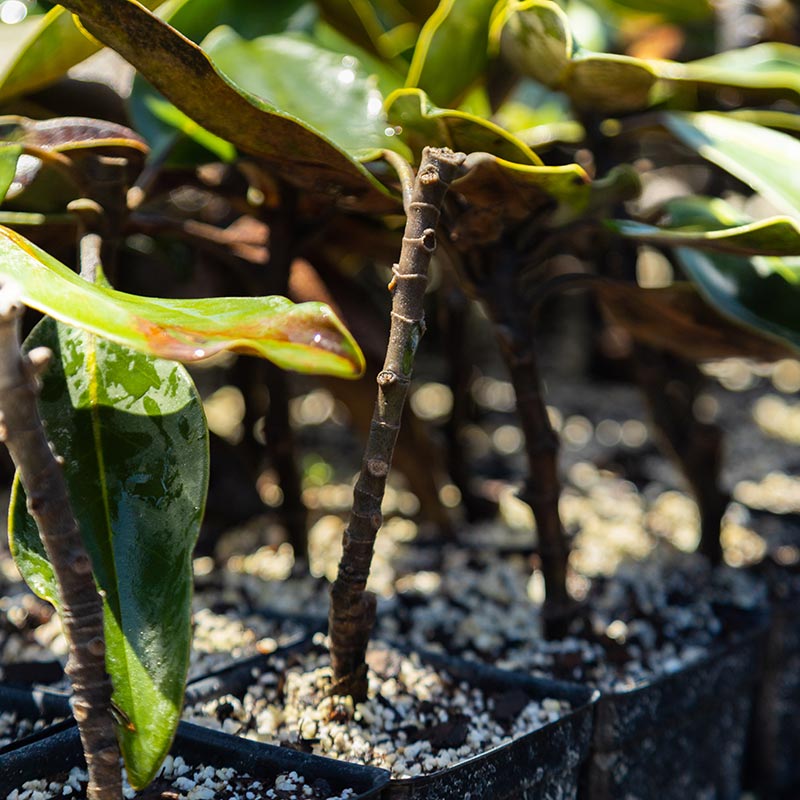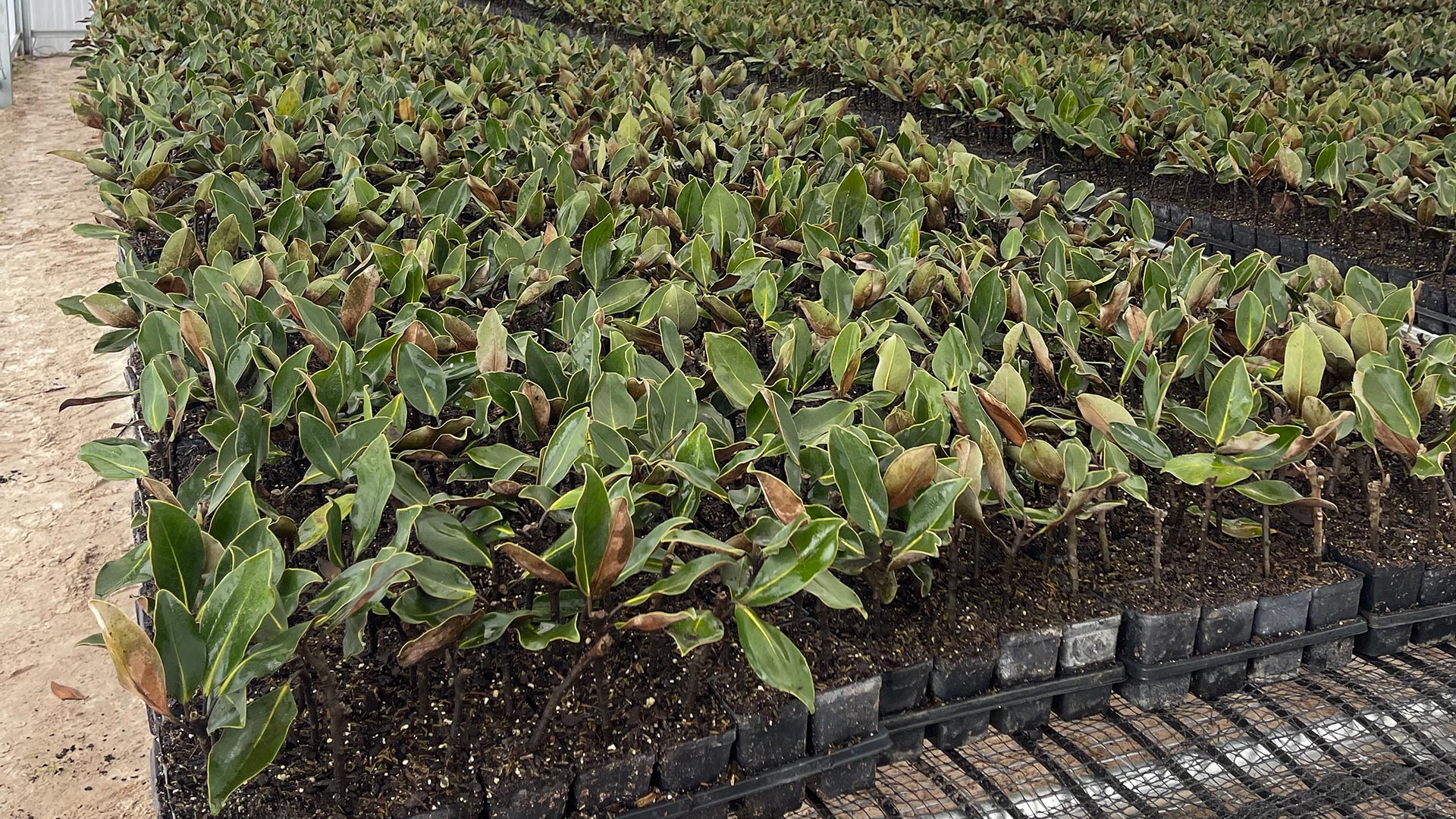The Roots of Our Business
At Seeds of Life, we help folks cultivate both memories and green thumbs. Whether you order a Meyer Lemon as a housewarming gift, a rose for Mother’s Day, or an In Memory Southern Magnolia, planting a tree roots a memory and allows it to take on a life of its own.
We’re truly honored by the privilege of celebrating and commemorating all of life’s precious moments with you. Each plant that leaves our family farm in Central Florida represents a story – stories that you generously share with us in your phone calls, emails, and reviews. Because of your stories, we keep doing what we do best!
Behind the scenes, it takes a village to make sure you get nothing but the best nature has to offer. Today’s blog is Seeds of Life’s version of “How It’s Made,” or rather, “How It’s Grown!”
Stick around to the end if you want to learn how to grow plants like the pros do…
The Birds & The Bees
No, you’re not about to get that talk.
Well… Come to think of it… you’re getting the plant version!
The birds and the bees are who we have to thank for baby trees in the wild. When a plant flowers, the bees pollinate it. Pollen carries genetic material, and when that material is transferred between plants, it fertilizes the flower. Some plants are self pollinating, while others are uniquely capable of asexual reproduction. But, most plants reproduce sexually in this manner through the pollination process. It’s why we’re always going on about the importance of our pollinator species!
Pollinated flowers eventually turn into fruits, nuts, or seeds, and that’s where the birds come into play. Birds will eat those fruits and seeds, then fly around as they do. The seed will pass through the bird’s digestive system, and that seed will eventually find itself deposited in a new location (such as the windshield of your car or in a lovely grassy field). It’s then up to the seed to try and germinate wherever it lands if the conditions are right.
All About the Genes
When two unique sets of genetic material combine, we get a genetically new plant. It’s like shuffling a deck of cards: it’s still a deck of cards no matter how many times you shuffle, but each time you shuffle creates a brand new order of cards in the deck.
This is how plants evolve special adaptations and characteristics that make them better suited to their environments. You might notice different hues of flowers, or different shapes of leaves when this happens. That’s how your white rose plant ended up turning pink after a while… it got cross pollinated with your neighbor’s red rose!
Making Something New
As an agriculturist, you can intentionally cross pollinate certain trees with others to try and create a new combination of genes. If it’s a distinct enough combination of genes, you might even get to say it’s a new species of plant. That’s pretty rare and difficult to do, but it can and has been done.
Some genetic profiles are highly desirable, and that’s how we end up with different trademarked species of tree. The Silvermist Magnolia and Magnolia Ann are great examples of this.
The Wild Card
But unless you’re trying to create a brand new tree, genetic variation becomes a bit of a liability.
When you’re in the business of selling trees, genetic variation isn’t necessarily what you want. You want – no, you need – consistently high quality plants. For every new combination of genes made through pollination, you run the risk of genetic mutations that you don’t want, such as a plant with flowers that aren’t the size, shape, or color you’re advertising in your products.
Pollination wild cards are risky, and nature is, well, wild.
So what’s a farmer to do?
Sticking It to Nature
Not like that, pinky-promise! We love, adore, and respect nature and its bounty.
We literally “stick” nature. In fact, there’s a whole workflow in our greenhouses every year that we call “sticking.”
It’s farmer slang for the golden P word: propagation!

What is Propagation?
Propagation is a method of making new trees that allows a farmer or gardener to functionally Xerox a plant.
People get uncomfortable when we say “it’s a genetic clone,” but scientifically speaking, that’s exactly what’s happening. The farmer gets a baby tree that’s genetically identical to the tree it was harvested from.
Propagations grow quickly and efficiently, since they aren’t started from a seed. The farmer saves water and resources, grows more plants in a shorter amount of time, AND they can guarantee their customers a high quality plant.
No surprises, no variations, and no wild cards.
Just nature’s finest.
How Does Propagation Work?
It’s so delightfully simple!
The farmer or gardener will take a clean pair of pruning shears and clip off a healthy branch from the tree they wish to grow more of.
The gardener will need to decide whether to start that clipping in water alone, or if it’ll go directly into soil. Both have their own perks and disadvantages, and different types of plants will prefer one method over the other. With patience and care, the clipping will put out roots of its own, making it a self-sustaining plant!
You care for propagated plants just like you would for any other plant. All we’ve done is skipped the seedling phase and gone straight to the sapling phase of life.
This process is how we at Seeds of Life can truly guarantee your plants are as hardy and healthy as the ones in our groves!
How You Can Propagate Your Own Plants
Propagating your own plants is fun!
Grab a pair of pruning shears and give them a good cleaning with rubbing alcohol. We’re about to create a small wound on your host plant, so we want to make sure we’re not introducing harmful germs to the clipping site.
Select a branch or stem that’s doing well. If your plant has nodes, clip right below the node at an angle. Make one clean cut at a diagonal angle, then transfer the cutting to a jar with cool, clean water.
Set your clipping jar in a sunny windowsill and wait patiently for roots to emerge! This can take days to a couple weeks, and it may require a few tries. Just make sure the leaves (if any) are not drowned in water, and make sure the cutting has plenty of water to drink.
When you finally see roots (hooray!), pot your clipping and enjoy your new plant!
A great starter plant for learning propagation is none other than the Pothos plant. It’s easy to care for and takes extremely well to being propagated. If you’re brand new to this, we’d recommend starting there.
A Note on Prop-Lifting
Because of the efficacy of propagation, some folks will steal cuttings from their neighbors or from growers they visit without paying for the plant. Please remember this is how some people make their livelihoods, so don’t steal propagations. This is known as “prop-lifting.”
So… What Will You Try Propagating?
Email us or DM us on social media with your propagation adventures!


